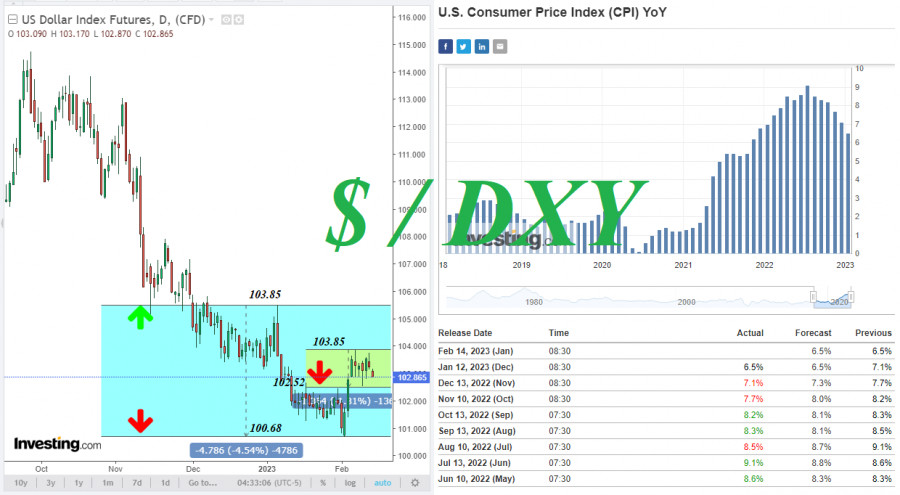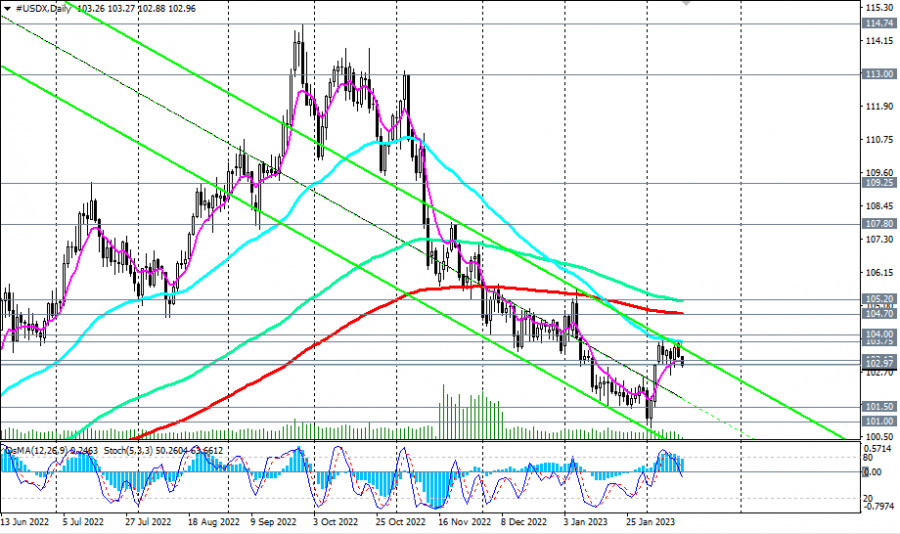

As we noted in our review yesterday, "the market needs new drivers," and market participants who follow the dollar quotes need new information regarding the current economic situation in the United States.
In this regard, market participants will focus on the inflation report of the U.S. Bureau of Labor Statistics for January.
According to forecasts, U.S. annual CPI may fall to 6.2% from 6.5% in December. The annual core CPI may also decline to 5.5% in January from 5.7% a month earlier.
This is negative news for the dollar, and we see the dollar and its DXY index declining since the opening of today's trading day.
Thus, as of writing, DXY futures were trading near 102.86, about 100 points below last week's 6-week high of 103.85. The report from the Labor Department released earlier this month showed that the dollar had strengthened and its index had grown stronger in January. According to the report, nonfarm payrolls rose by 517,000 in January, while the overall unemployment rate fell to 3.4% from 3.5% a month earlier. The actual data was much stronger than forecast (+185,000, following December's +260,000 increase). Meanwhile, the average hourly earnings of Americans continued to rise in January.
Immediately after the publication of this report, the dollar strengthened sharply, and its DXY index closed the trading day on Friday at around 102.75, 2% above the local 10-month low of 100.68, reached the day before the release. However, economists stressed that this is still not enough for the dollar to reverse the negative dynamics. There is still a threat of a renewed decline in DXY towards the psychologically important level of 100.00.
The breakdown of the recent local low at 100.68 will update the scenario again, and the breakdown of the 102.52 local support level will be the first signal. A break of the 100.00 round level will give a new impetus to the dollar's decline, sending the DXY towards the lows of 2 years ago and the 90.00 mark.

Thus, today's inflation data from the Bureau of Labor Statistics will be key for the dollar and its direction in the coming days.
If today's data on inflation point to an even stronger slowdown, then the dollar may decline sharply.
At the moment, the dollar is still receiving support from the tense geopolitical situation in the world and high inflation. According to the University of Michigan report published last Friday, the component of the report in terms of inflation expectations of Americans rose to 4.2% in the year ahead (from 3.9% a month earlier).
According to the statement of the Fed after the February 1 meeting, further rate hikes will be needed because inflation is still high, and there is not enough information available yet to talk about a sustained slowdown.